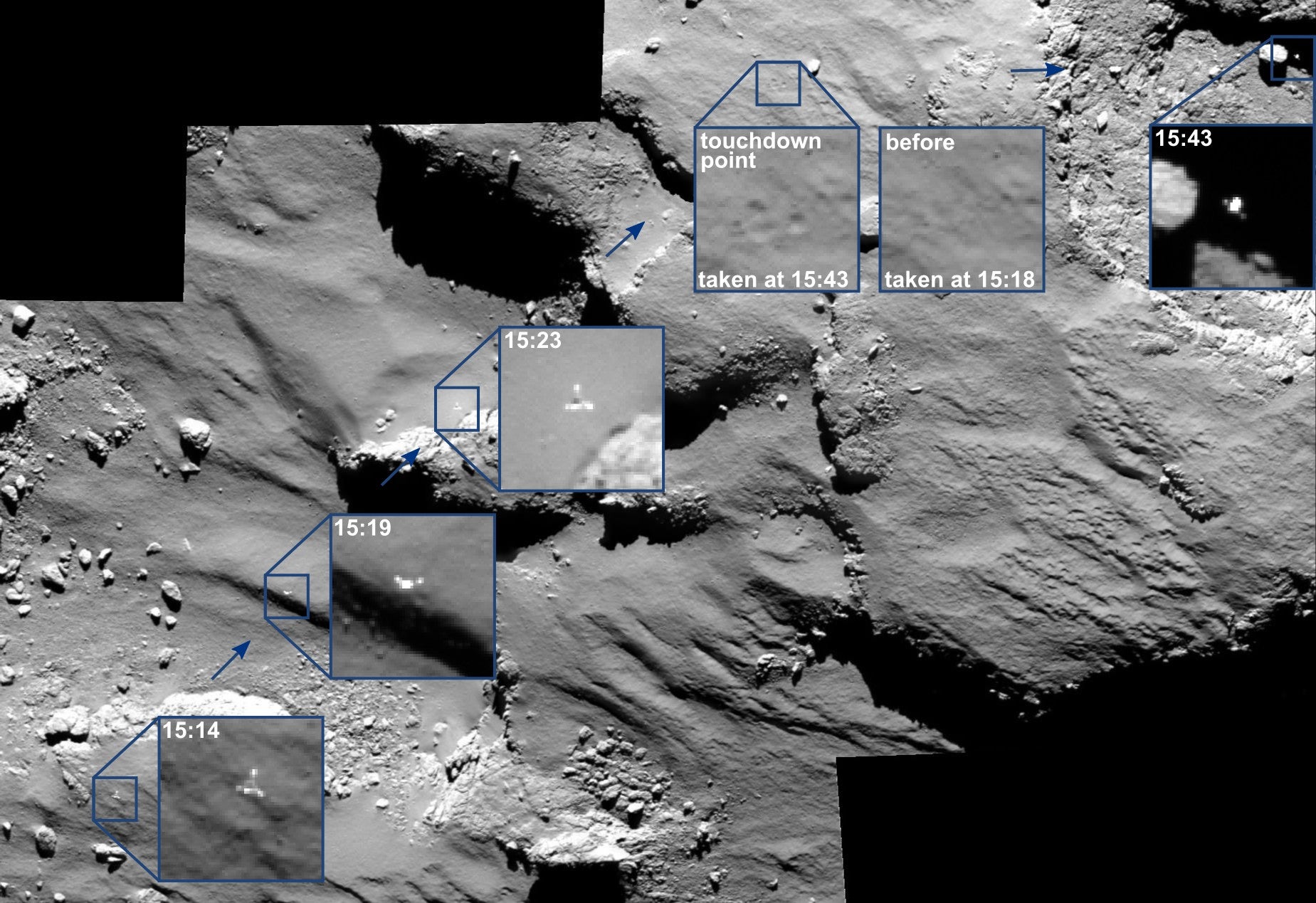Rosetta images show Philae lander's 'tallest, longest, slowest jump ever' across comet 67P
The lander bounced for more than two hours in total due to the comet's incredibly weak gravity

The European Space Agency (ESA) has released new images showing the amazing (and somewhat unexpected) journey taken by the Philae lander as it bounced across the surface of comet 67P.
Although the fridge-size robot’s exact location is still unknown, the new images show half hour of its journey as it descends to the comet and after its harpoons failed to secure it to the surface.
In the image above (click here to see a larger version) the three inset frames on the left show the descent with Philae travelling at around a metre a second. It then bounces off the surface and starts travelling east out of the image at about half that speed.
This initial bounce has been described as ‘the tallest, longest, slowest jump ever’ with Philae sailed for just under two hours and covering a distance of around a kilometre before hitting the surface and taking off again for a further seven minutes.
The ESA has reported that Philae is trapped in an unexpectedly shady area that has cut off its power earlier than expected, with the craft going into hibernation on 15 November 2014.
However, scientists say that the probe still managed to complete ’80 to 90 per cent’ of the scientific work that had been planned and there’s still a chance that it will reawaken in the coming weeks and months as the comet flies closer to the Sun – hopefully delivering more energy to Philae’s solar panels.
Subscribe to Independent Premium to bookmark this article
Want to bookmark your favourite articles and stories to read or reference later? Start your Independent Premium subscription today.

Join our commenting forum
Join thought-provoking conversations, follow other Independent readers and see their replies